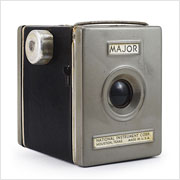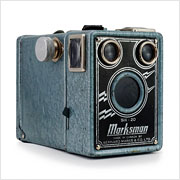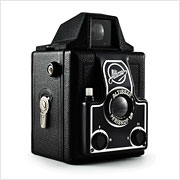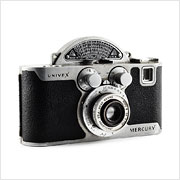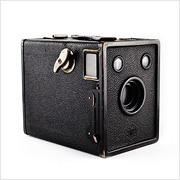National Instrument Corp. Major
The National Instrument Corp. Major is a barebones box camera designed for the 620 film format and introduced by the National Instrument Corporation of Houston, Texas. The Major, alongside the Colonel (virtually identical apart from having flash synchronization capabilities), and the upright Camflex were all introduced at around the same time and were the only known models produced during the manufacturer’s brief foray into the photography industry which makes all three cameras relatively rare and difficult to find.

